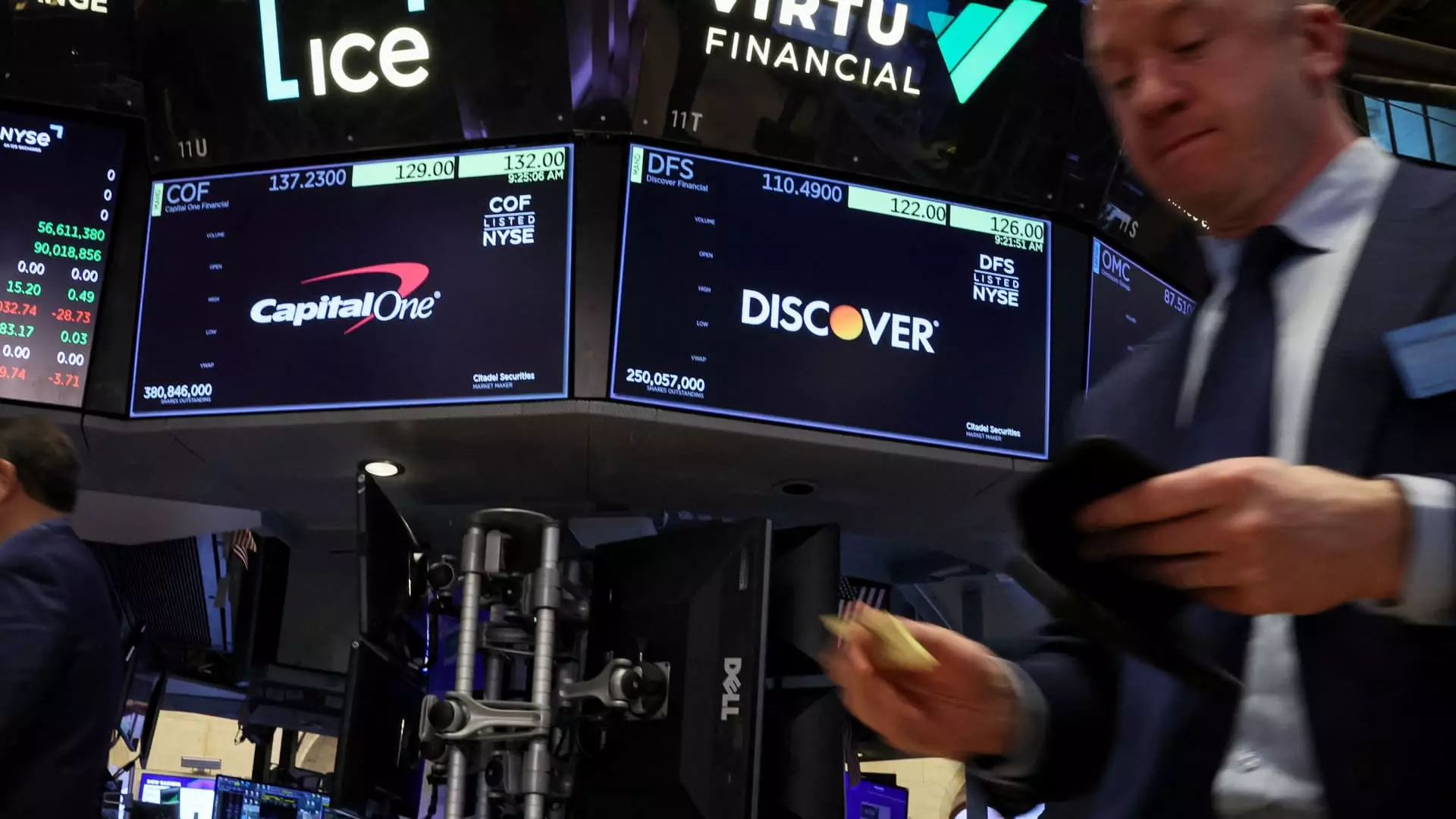In a significant move that could reshape the banking landscape, Capital One has received the necessary approvals from regulatory bodies to proceed with its monumental $35 billion acquisition of Discover Financial. The implications of this approval extend far beyond the immediate benefits for the merging entities; they underscore a profound shift in the regulatory environment, one that is notably more accommodating under the current administration. Observers note that the current regulatory leniency may herald a new era of aggressive consolidation in the financial sector, illuminating the stark contrast with the previous administration’s stringent regulatory stance.
The blessings from the Federal Reserve and the Office of the Comptroller of the Currency not only favor Capital One but also echo an optimistic sentiment among financial institutions. For investment banks like Goldman Sachs, a revitalized stream of mergers and acquisitions (M&A) could create lucrative opportunities. This merger is merely a stepping stone—a “clearing event,” as analysts at Wells Fargo aptly described it—that may pave the way for a flurry of larger banking deals. In an environment fundamentally influenced by regulatory attitudes, this acquisition signals the potential for a more dynamic marketplace.
An Economic Fortress Reflects Resilience
Analysts are not simply celebrating lofty numbers; they believe the Discover acquisition arms Capital One with a “cushion” against economic uncertainties. In today’s volatile market, the financial agility that comes from bolished earnings potential is invaluable. Capital One’s multifaceted business model—which covers credit cards, consumer banking, and commercial banking—enhances its adaptability in a climate fraught with potential downturns. It’s an economic fortress that could stand resilient against the waves of market disruption driven by factors like inflation and geopolitical tensions.
The banking sector is not merely a zero-sum game; the acquisition empowers Capital One to reduce its reliance on industry giants like Mastercard and Visa by integrating Discover’s established payment network. This strategic pivot not only diversifies revenue channels but also strengthens its competitive stance, allowing it to capitalize on the evolving payments landscape, where consumer preferences are shifting rapidly.
The Broader Impact: Rattling the Financial Markets
Yet, amidst the euphoria of regulatory approval and strategic growth, the broader implications paint a more complex picture. Financial stocks reflected uncertainty in the aftermath of the approval. Investors were shaken by fresh anxieties regarding President Trump’s reciprocal tariffs. Such macroeconomic concerns indicate that while the approval may represent a breakthrough, the path to recovery for financial markets is still laden with challenges that could impede corporate maneuverability in the M&A sector.
Take Goldman Sachs as a prime example; it faces existential concerns as revenue from its investment banking division fell short of expectations. CEO David Solomon’s acknowledgment of a market plagued by uncertainty serves as a stark reminder that regulatory ease does not absolve underlying economic vulnerabilities. Companies are grappling with hesitance in making pivotal decisions—a far cry from the aggressive deal-making landscape envisioned by many at the start of the year.
Optimism Coupled with Skepticism
Despite these apprehensions, the investment community remains hopeful. The Capital One-Discover merger could unlock a much-needed resurgence in M&A activity, and a more favorable federal environment for financial consolidation is pivotal. However, this optimism is tempered by the pragmatic realities of economic uncertainties and tariff negotiations. A true rebound in deal flow requires not just a change in regulations, but also a stabilizing outlook on trade policy and macroeconomic indicators that have been erratic.
As the dust settles from Capital One’s win, it brings to light an essential narrative about opportunity in times of turbulence. Companies that can navigate the storm are positioned to reap substantial rewards. The breadth of this merger and potential subsequent deals speaks to a landscape where only the most resilient, adaptable players will thrive.
What Lies Ahead for Financial Institutions?
In sum, the approval of the Capital One-Discover merger carries weighty implications for the future of banking in America. It can serve as a harbinger of consolidation, allowing big banks not only to grow but also to transform in response to shifting consumer demands and economic headwinds. Financial institutions like Wells Fargo, eyeing similar favorable treatment from regulators, may soon join the fray, bolstering the idea that a new era of aggressive expansion is upon us.
While the road ahead may be fraught with uncertainty, it is also ripe with promise for those who can seize the moment. The financial landscape is evolving, and for players like Capital One, the potential for growth may outweigh the looming shadows of regulatory downward pressure and economic volatility. As we watch this space unfold, one question remains vibrant: Are we entering a renaissance of banking that could forever alter our financial ecosystem?

